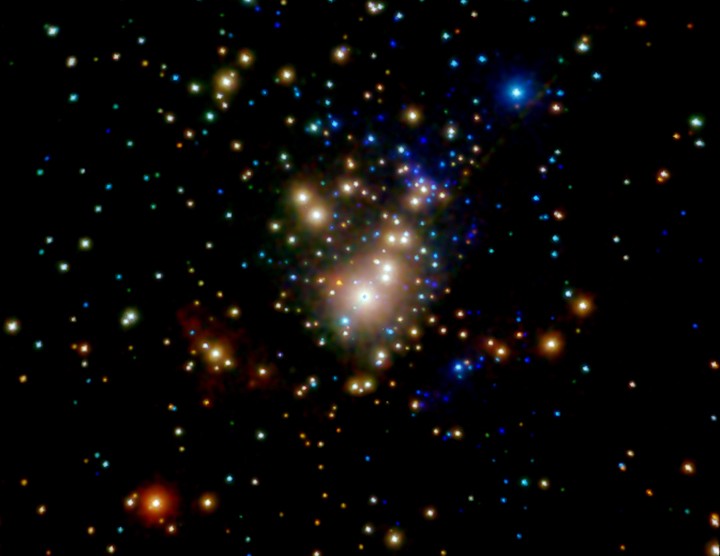Explanation: The stars of Orion shine brightly in visible light in planet Earth's night sky. The constellation harbors the closest large stellar nursery, the Great Nebula of Orion, a mere 1,500 light-years away. In fact, the apparently bright clump of stars near the center of this false color Chandra x-ray telescope picture are the massive stars of the Trapezium - the young star cluster which powers much of the nebula's visible-light glow. The stars shown in blue and orange are young sun-like stars; prodigious sources of x-rays thought to be produced in hot stellar coronae and surface flares in a young star's strong magnetic field. Our middle-aged Sun itself was probably thousands of times brighter in x-rays when, like the Trapezium stars, it was only a few million years old. The x-ray image spans about 2.5 light-years across the central region of the Orion Nebula.
1999 2000 2001 2002 2003 2004 2005 2006 2007 2008 2009 2010 2011 2012 2013 2014 2015 2016 2017 2018 2019 2020 2021 2022 2023 2024 2025 |
Январь Февраль Март Апрель Май Июнь Июль Август Сентябрь Октябрь Ноябрь Декабрь |
NASA Web Site Statements, Warnings, and Disclaimers
NASA Official: Jay Norris. Specific rights apply.
A service of: LHEA at NASA / GSFC
& Michigan Tech. U.
|
Публикации с ключевыми словами:
corona - trapezium - star cluster - Трапеция Ориона - Туманность Ориона
Публикации со словами: corona - trapezium - star cluster - Трапеция Ориона - Туманность Ориона | |
См. также:
Все публикации на ту же тему >> | |
